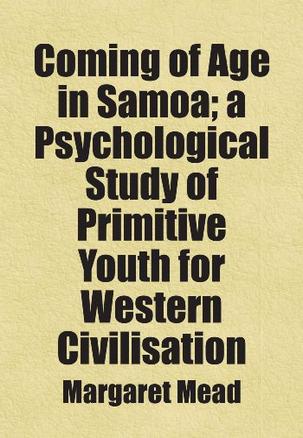

Because Mead is a woman, she was able to gain the trust of the girls and was allowed a deeper look into the lives of these young women. These interviews allowed Mead to compare what she observed to what actually happened. Each of her interviewees was spoken to in their own language and were asked questions about their approximate age, questions about their family and their standing within the family (for example, the order of birth). In order to collect data, Mead employed what are now standard anthropological tactics: she selected informants and interviewed them. This cultural purity was important in Mead’s study, as it allowed her to look purely at the Samoans for what their culture naturally promoted. Islands extremely filtered areas, making them less diverse and more culturally pure than cultures that exist on a continent. Using island cultures as a means to study different behaviors has become more popular since Mead’s trip in 1928. She studied six hundred individuals than other studies in order to create a richer and more detailed account of their lives. Additionally, she observed ceremonies from all seven of the villages in the Manu’a archipelago.


In this ethnography, Margaret Mead observed groups of girls living in three villages on one coast of Ta’u. She also mentions that American girls are presented with so many choices and ways of doing things that it is harder to make the right choice. She attributes the lack of trauma from the adolescent period to the differences in sexual freedom between American and Samoan girls. Mead reports in her book that for the Samoan women, adolescence is not particularly stressful.

Each chapter of the book presents a new observation Mead talks about the life of the inhabitants of the island of Ta’u. In it, Margaret Mead discusses the lifestyle of adolescents in Samoa in order to determine which behaviors are caused by physiology and which behaviors are caused by the culture or environment the person grows up in. Coming of Age in Samoa by Margaret Mead is perhaps one of the most famous ethnographies ever written.


 0 kommentar(er)
0 kommentar(er)
